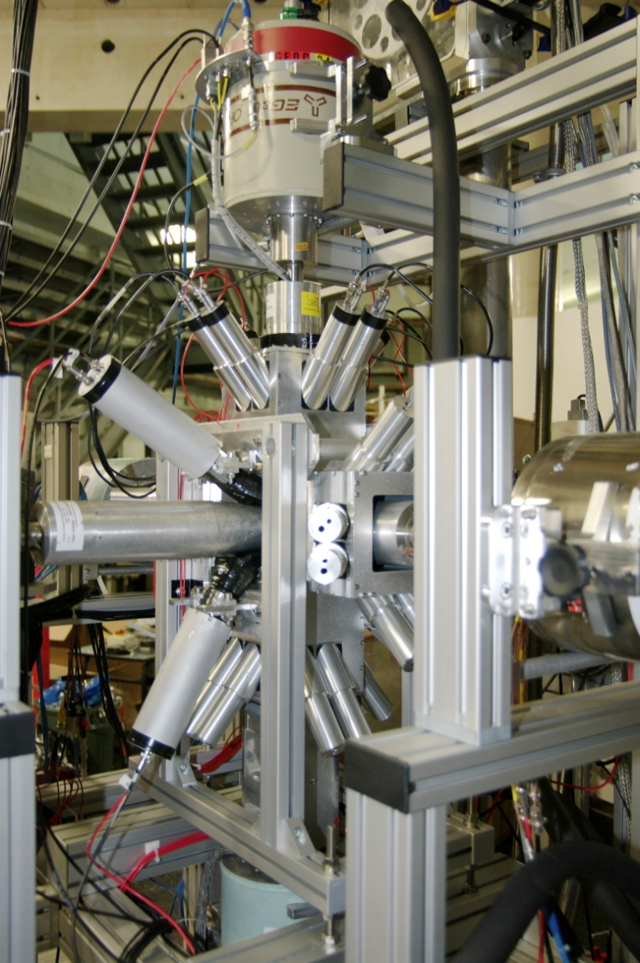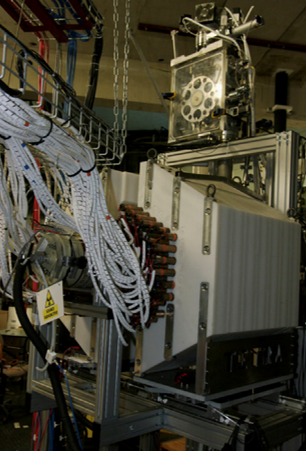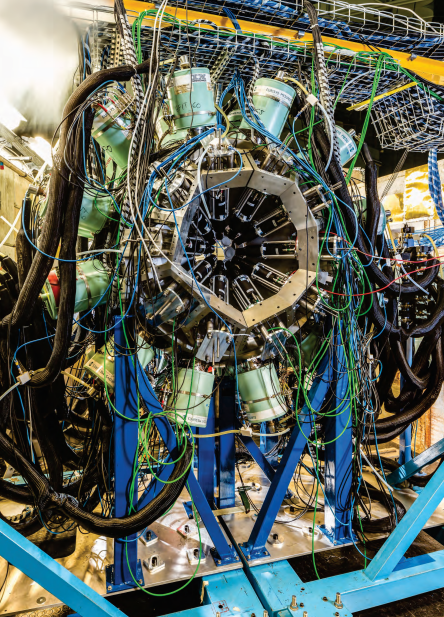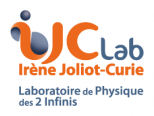The combination of different decay-spectroscopy techniques on dedicated experimental setups gives access to important nuclear observables describing both ground and excited nuclear states: lifetimes, energies, branching ratios, transition and emission probabilities. At ALTO a broad pallette of such techniques is available in order to study the fission fragments of actinide targets induced either by photofission (using an accelerated electron beam) or by neutrons (using the LICORNE neutron source).
Two setups are employed for performing the decay spectroscopy of the ALTO-LEB photofission fragments. First of all, the tape-station-based installation BEDO (BEta Decay studies at Orsay) disposes of plastic scintillators and Germanium detector with X-ray and Compton suppression capabilities. It can be organized either for high-resolution gamma-ray spectroscopy or fast-timing measurements. It can also be enhanced with the addition of extra detectors such as TETRA (for neutron counting) or the PARIS clovers (for enhanced efficiency). Second of all, a dedicated tape station is available for conversion-electron spectroscopy, which is now being upgraded with an electron transport spectrometer for reducing the gamma-induced background in the electron spectra (the COeCO project).



The fission fragments produced by the LICORNE neutron source are being studied with the ν-Ball array, which is a hybrid spectrometer combining Ge and LaBr3 detectors for measuring gamma-ray energies and multiplicities, aimed both at understanding the fission process and the structure of exotic, neutron-rich nuclei.






